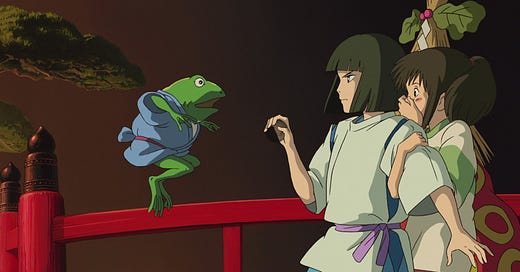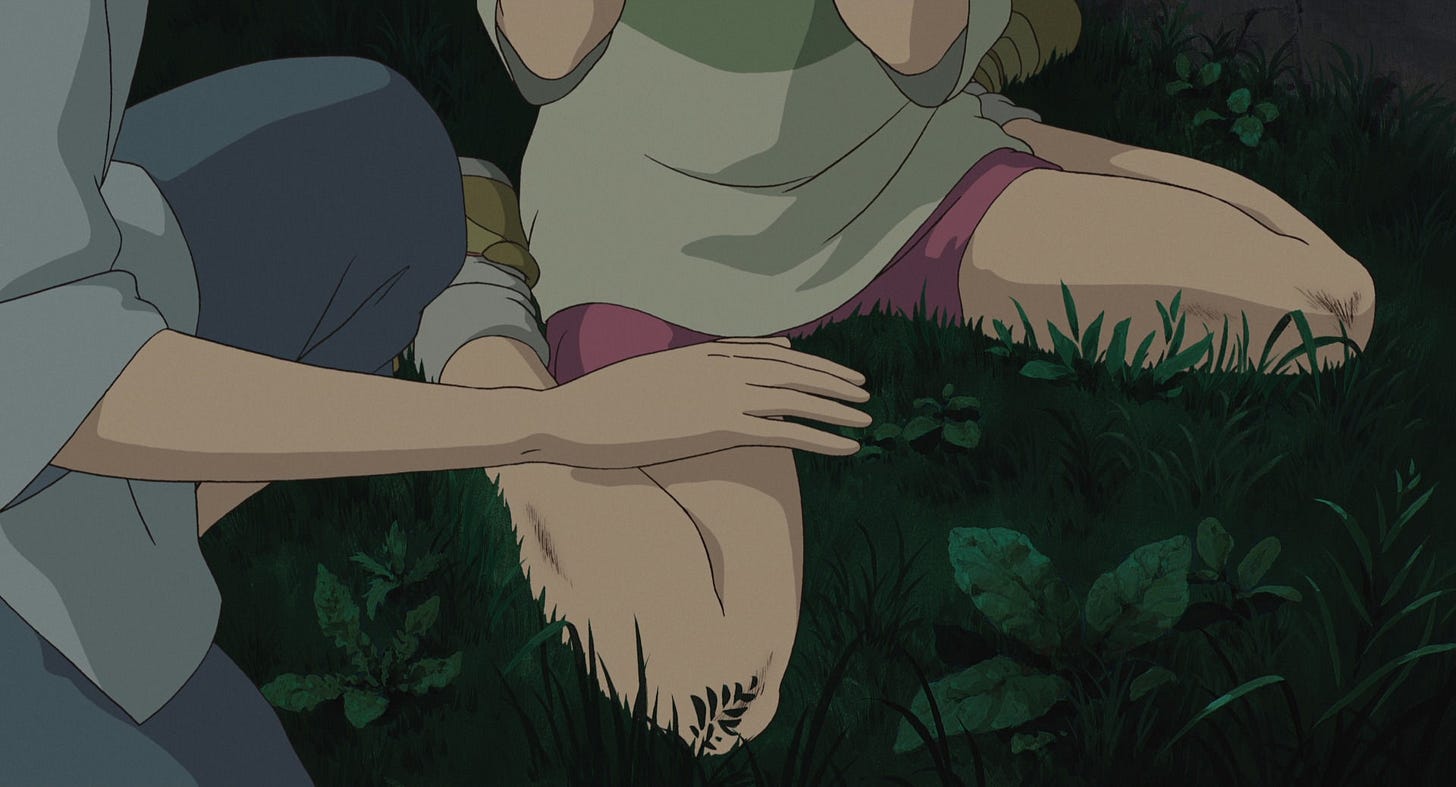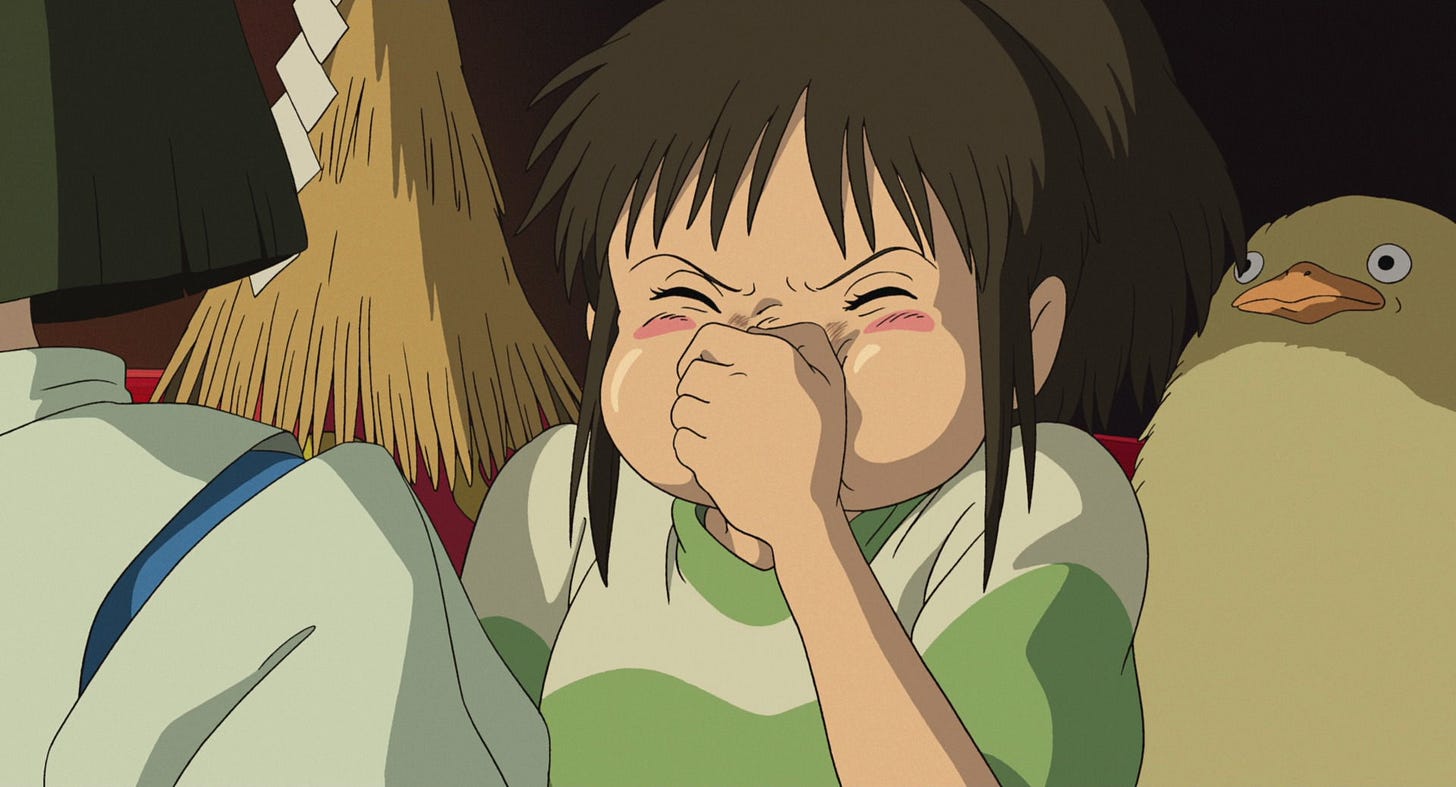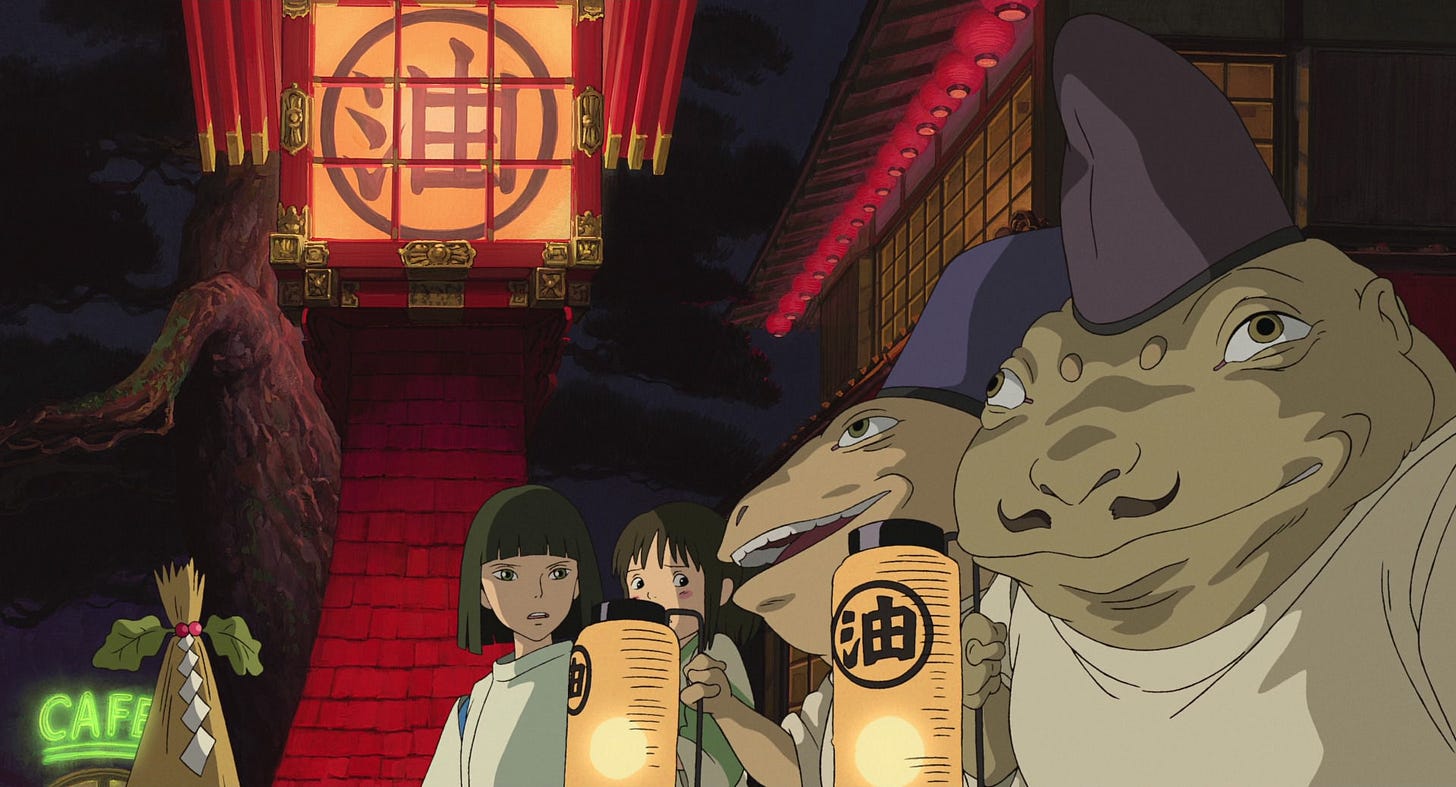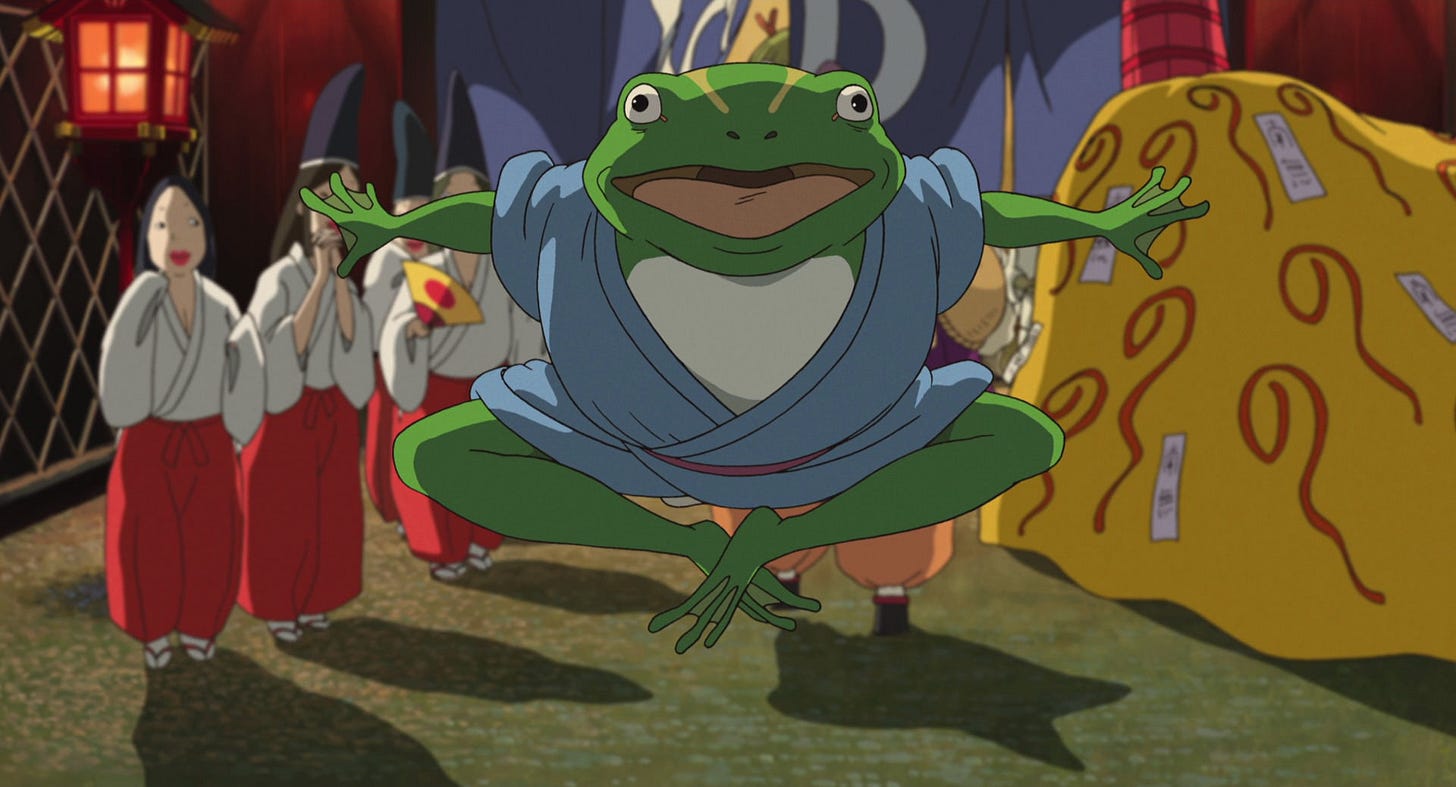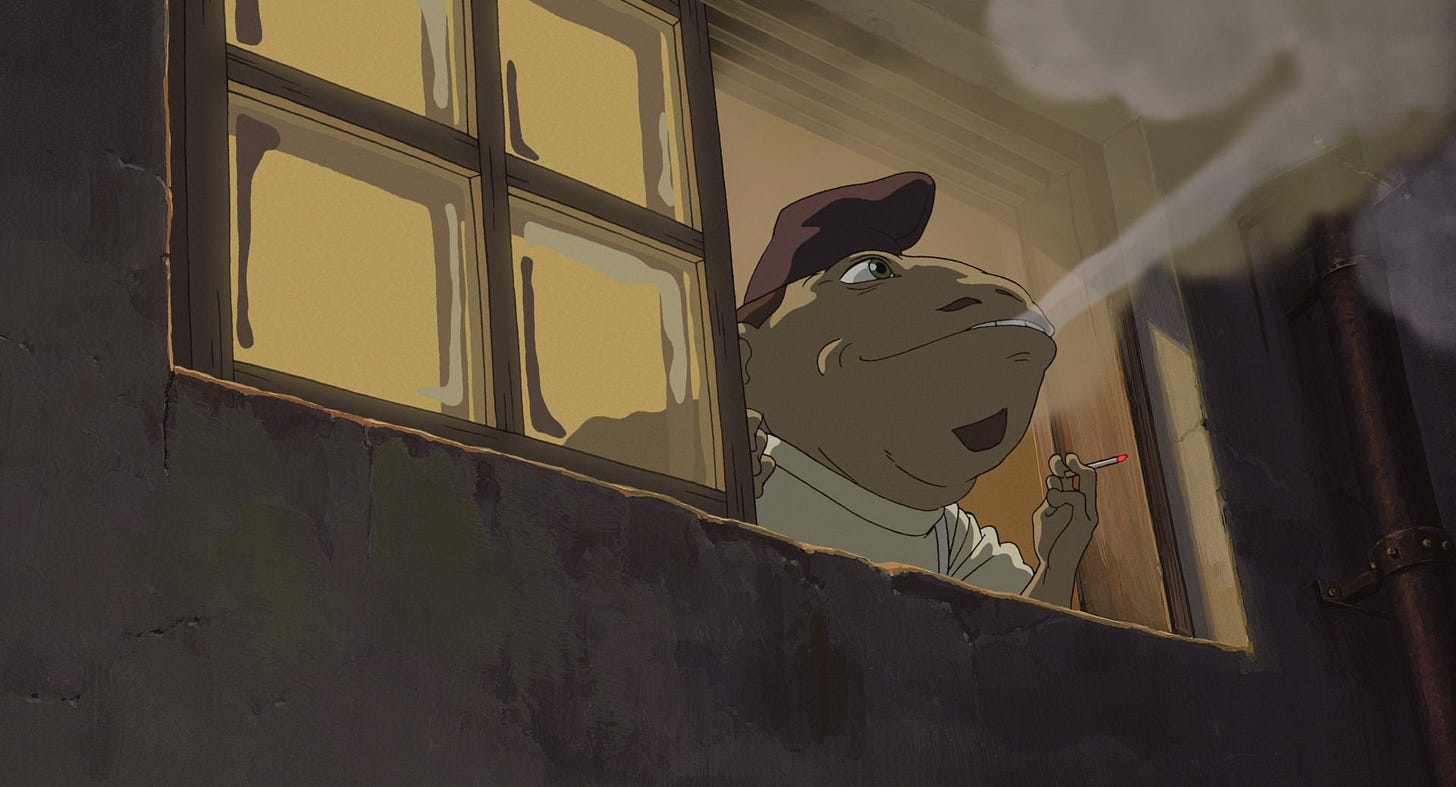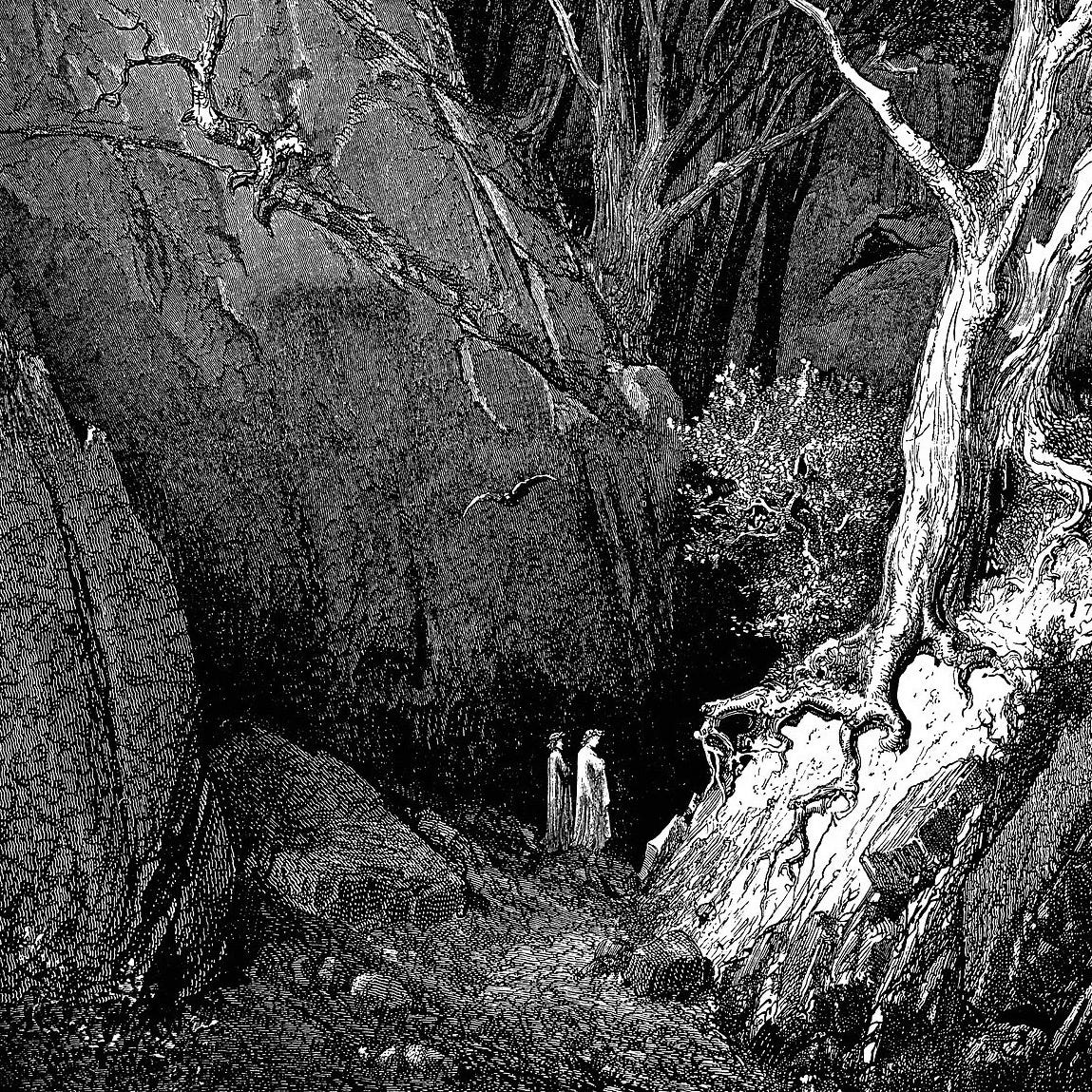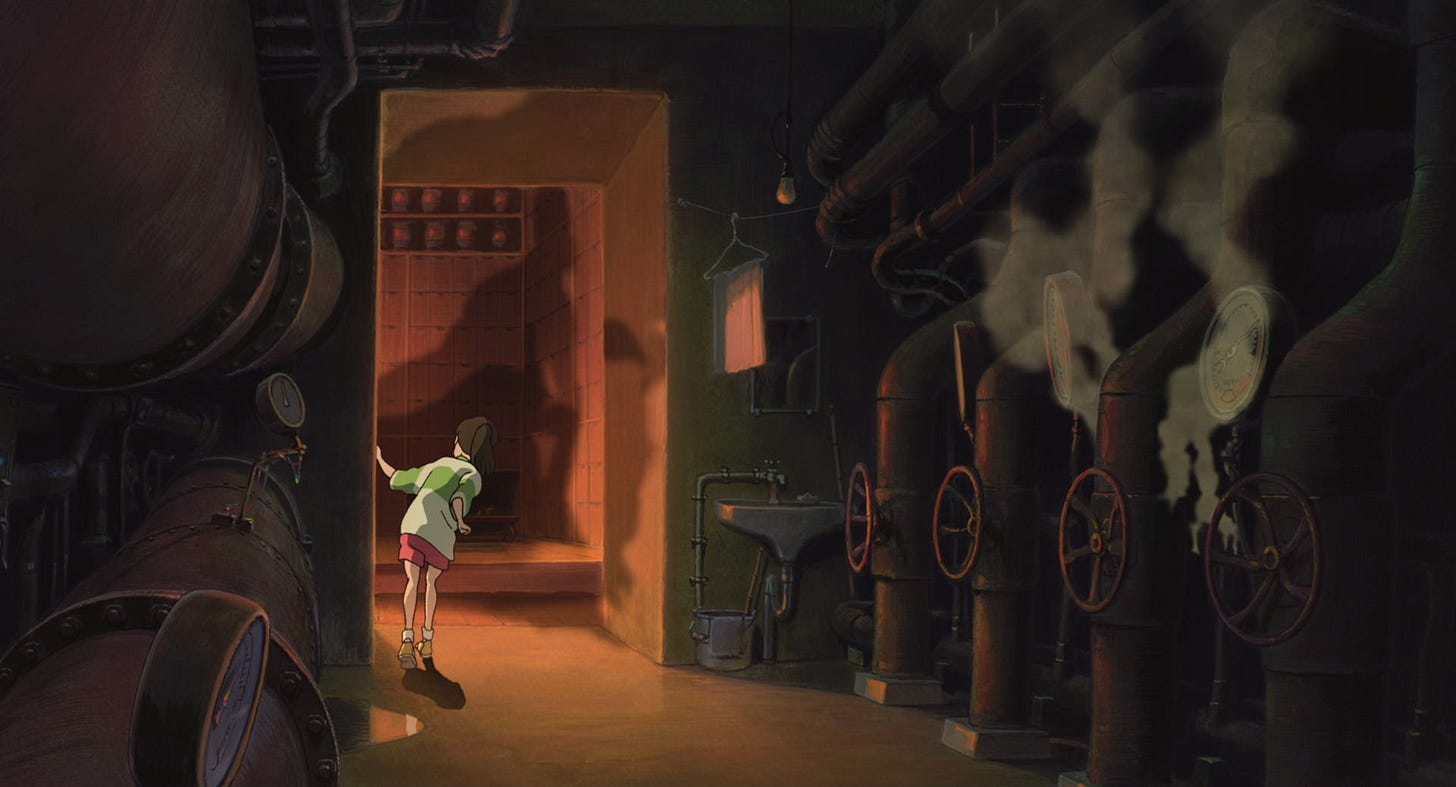Welcome to Falling Sand. We invite you to slow down, listen deeply, and rediscover the mystery of a world spoken into being.
Illumine our minds, our hearts, and our spirits, Lord.
In the name of the Father, Son, Holy Spirit.
Amen.
Let us begin.
The Shō of Spirited Away – Dwelling Within Otherworld II
In our last post, we began exploring the Shō (development) of Spirited Away. This is where the world of the story unfolds. It’s the part of the tale where names are lost, souls are tested, and the path of transformation begins. We draw nearer to the bathhouse now.
Let us meditate on this question as we dive deeper: What does it mean to remain human in a world that has forgotten what a person is?
The Power of Wind and Water
We left off following Chihiro’s initiation into the spirit realm via spirit-world food. We considered how this moment mirrors the mystery of the Eucharist: spiritual food as either medicine or judgment. Chihiro received what her parents profaned. She remained human because she received humbly what they consumed carnally. But there’s still a problem. For whatever reason, she can’t move her legs.
We can see this as reflecting a state of spiritual death. She is alive but unable to move, like the paralytic by the pool of Bethesda (John 5:5-9.)
Haku then pronounces what sounds like a ritual command over her, invoking wind and water. Although this moment comes and goes fast, it is one of the most cosmically charged in the film.
“In the name of the wind and the water within, unbind her.”
— Haku, Spirited Away
With those simple words, Chihiro regains strength and can once again move. But why does the name of wind and water hold this power?
Church Fathers such as St. Maximus the Confessor speak of all creation as imbued with divine purpose. Each element, creature, and natural force contains within it a logos (divine principle or meaning) that reflects the one Logos, Christ. The elements—earth, water, fire, air—are not just physical matter, but living symbols that mediate between the visible and invisible world. Water is life-giving, cleansing, and healing, and sometimes even chaotic. It is the element of baptism, of death and rebirth. Wind is associated with spirit, breath, and the unseen movement of God. When Haku invokes wind and water, he is calling upon the primal elements through which God animates and sustains life.
In the Gospels, Christ walks on water and stills the wind. These are revelations, not parlor tricks. They show His Lordship over creation.
As the Orthodox hymn for Theophany (Christ’s baptism) declares,
“The waters saw You, O God, the waters saw You and were afraid. The Jordan turned back!”
This quiet line of dialogue, “in the name of the wind and water” is more than poetic. It’s sacramental, liturgical, cosmic. This is an echo of the way the Church blesses not only bread, wine, water, and oil, but all the elements of the wilderness, calling them back into communion with God.
Holding One’s Breath
Chihiro has regained the strength in her legs and now she is running, pulled along by Haku—her mediator. Various scenes flicker by as they delve deeper into the world, one of these being a room packed with fattened pigs. This leads the viewer to ask: Were all of these pigs once human like Chihiro’s parents?
Finally, they reach the boathouse. Haku instructs Chihiro to hold her breath as she crosses the bridge—a deeply symbolic act.
To breathe is to live. To stop breathing is to die. You can think of holding your breath as suspending yourself, entering the liminal state between life and death. It is a baptismal gesture. As I mentioned earlier, breath (wind) is Spirit. To pass through the realm of spirits while holding one’s breath is to walk the edge between two worlds, unseen.
I grew up in the midwest, USA. I can’t speak on how universal this tradition is, but something rather common to many families I know is the act of holding one’s breath while driving past a graveyard, over a bridge, or through a tunnel. Though undoubtedly unconscious, this “game” is a folk echo of the same cosmic reality Chihiro is acting out in this scene.
A Note on Frogs
In our last post, we talked about threshold, mediating characters. One of these examples was the Grimm Bros Frog Prince.
…frogs are amphibious creatures. Border-dwelling animals perfectly at home in both land and water. They straddle the line between Yin and Yang. Chaos and order.
I want to meditate on this for a beat due to Miyazaki’s heavy usage of frogs within Spirited Away. Frogs are shown in places of transition such as the bridge to the bathhouse or the stairs descending to the boiler room (pictured above), but it is also relevant that the bathhouse workers all display a certain amount of froggishness.
The Japanese word for frogs is kaeru, which is a homonym also meaning “to return.” This ties in perfectly to a symbolic cosmology in which frogs are creatures able to go between places and back again. But in Spirited Away, the frog-like spirits aren’t noble. They seem to represent a sort of spiritual stagnation or even degredation. These workers are later portrayed as greedy, lazy, and (as seen with No-Face) sycophantic. Their animalistic behavior and exaggerated features suggest a kind of devolution. Tying this back to the parents’ transformation into pigs, perhaps the range of frog-like appearance in the workers is an outward manifestation of each individual’s spiritual state. This is reflected in Japanese ghost lore (yōkai) as well, which holds the idea that spirits who lose themselves in vice can become monstrous.
The Christian can view these frogs as creatures who have traded the glory of the imago Dei for the sludge of material desire. This mirrors Nebuchadnezzar becoming like a beast (Daniel 4:33) and the prodigal son eating with pigs (Luke 15:16). Instead of speaking the logos, they croak and gossip. They covet and hoard temporary treasures. They serve Yubaba—herself a distorted mother figure (but more on that later.) They exist between the worlds, but not in a redemptive way like Haku or Chihiro. Instead, they’ve settled into a grotesque half-state. The irony here is that they work in a spiritual bathhouse meant for purification, but they themselves remaining impure. They are not servants of the holy, but rather cogs in a corrupt spiritual bureaucracy.
I also can’t help but compare these frog-like bathhouse workers to the angels inhabiting the pre-ring of Dante’s Inferno.
In Inferno, before even entering Hell proper, Dante and Virgil pass through the vestibule—a kind of spiritual no-man’s-land. Here dwell the “neutrals.” These are the angels who chose neither side when Lucifer rebelled.
“The miserable people, who have lost the good of the intellect…
They are mixed with that cowardly choir of angels who were not rebels, nor faithful to God, but were for themselves.”
(Inferno III.17–21)
These souls are not granted even the dignity of damnation. They are denied both Heaven and Hell. Their punishment is to forever chase a blank banner. The frog-people of the bathhouse echo this. And they are precisely what Dante condemns:
“The world will let no fame of them endure; Mercy and justice hold them in contempt.”
Descent as Ascent
From the bridge, it is important to point out that Chihiro’s journey is still not one of ascension. Rather, she is going down deeper and deeper into otherworld. Haku instructs her that she must go down to the boiler room, the underbelly of the bathhouse. Here, the imagery grows more alchemical. One must go to the darkest place in order to find transformation. It is here that there is a fiery furnace. It is here that the old self is burned away.
Compare this with the Arthurian legends of The Holy Grail and The Green Knight:
“Each knight departed from the Round Table and entered the forest at the point which he, himself, found darkest, where no path had been worn.”
(Vulgate Queste del Saint Graal)
The beauty of the Grail tale lies in its deeply individualized structure—each knight faces his own trial in the place which is darkest to him.
“He rides into wild lands, by ways strange and unknown, passing many a cliff and crag…”
(Sir Gawain and the Green Knight)
So, too, in Sir Gawain’s quest to face the Green Knight, he does not choose the easiest path, rather it is the strange one.
This is deeply Christian. It speaks to the mysterious journey each soul must take in cooperation with God. There is no one-size-fits-all route to theosis. Each person must enter the forest—the heart—at the place they find darkest. This echoes the words of Christ:
“If anyone would come after me, let him deny himself and take up his cross daily and follow me.” (Luke 9:23)
Not a cross. His cross. The trial is unique. And more importantly, it cannot be delegated. The Christian life is not theoretical—it is a real, lived descent into the wilderness of one’s own sin and brokenness, with Christ.
As St. John Climacus writes in The Ladder of Divine Ascent:
“Ascend, brothers, ascend eagerly, and be resolved in your hearts to ascend; hear him who says, ‘Come and let us go up to the mountain of the Lord…’ but only he who climbs and weeps will reach the summit.”
The journey one takes to salvation is strange, humiliating, filled with fear and temptation. Why? Because it is the pattern of the Cross. The way of Christ is foolishness to the world (1 Cor. 1:18). The Cross is a the irrational one in the eyes of the world. It is a way that seems to lead to death, but opens into eternal life.
St. Isaac the Syrian expresses this paradox:
“The path to God is a daily cross. No one has ascended to heaven with comfort. We know where the way of comfort leads.”
See You Soon, Kamaji
It is here—in the fiery belly of the bathhouse—that Chihiro meets Kamaji, the spider-like furnace master. This is where we will pick back up in The Shō Part III.
So long, for now.
